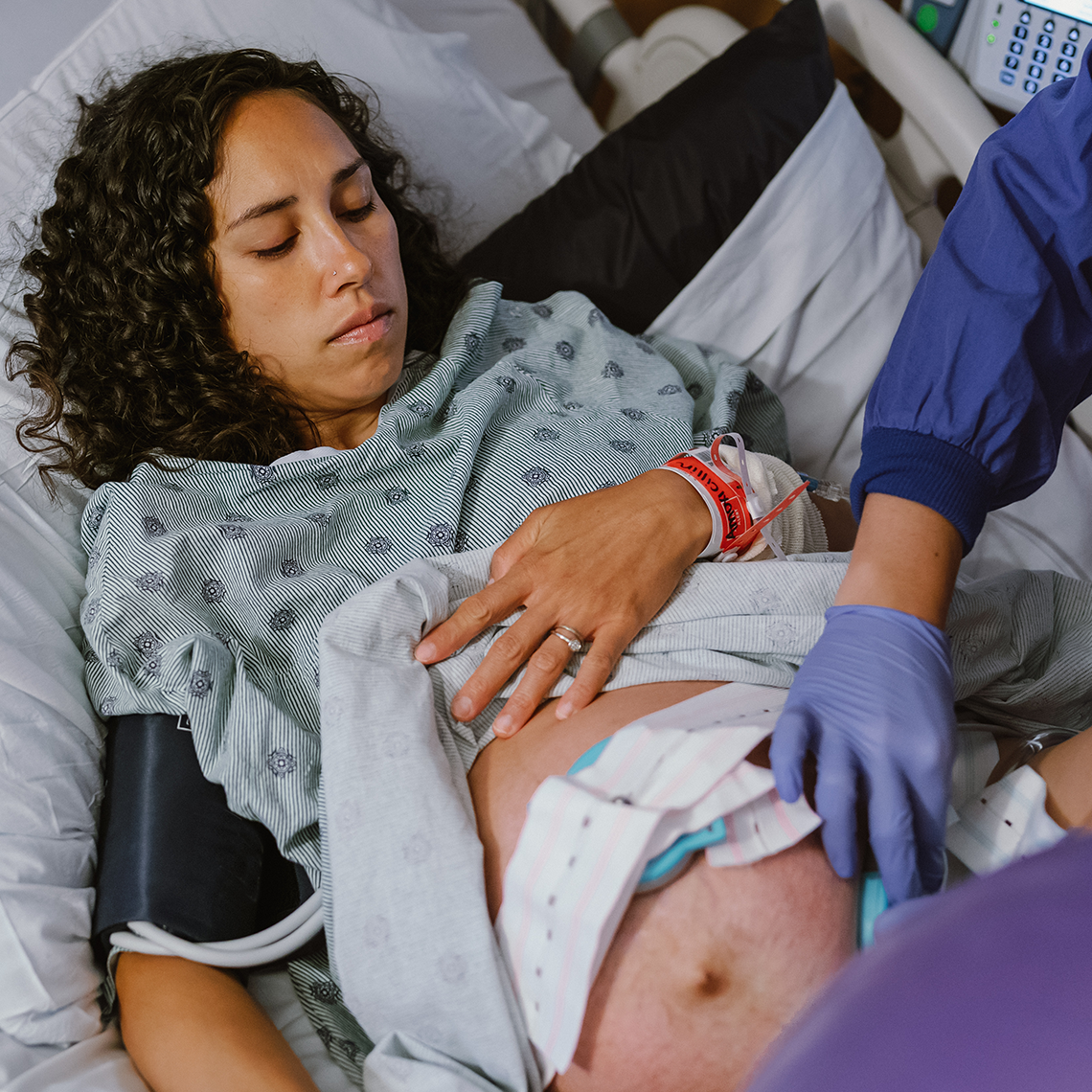Podcast
Incidental Lung Nodule Overlooked, No Follow-up, Fatal Cancer Advances
Dec 29, 2023

“The initial data on the effectiveness of ambulatory safety nets in increasing the completion rate for necessary follow up care is very encouraging. It will be exciting to see the positive impact of these programs as they are rolled out across additional areas.”
Adam Schaffer, MD
Senior Clinical Analytics Specialist, CRICO
[Dramatization]
My husband died from lung cancer. He wasn’t the best at taking care of himself, but they had tests showing he had cancer for 2 years before they told him or tried to do anything about it, and by then it was too late.
[Narration]
A 58-year-old male patient was referred by his PCP for an abdominal CT to rule out an abdominal aneurysm. The patient was a long-term smoker with a history of aortic bypass surgery and high blood pressure. The CT was negative for an abdominal aneurysm, but it showed nodules in the right lung base and a right renal lesion.
The radiology report recommended a follow-up CT of the lung and a renal ultrasound. Although the PCP initialed the report from the radiologist, the record does not indicate that they ordered any follow up tests or held a discussion of the results with the patient.
Two years later, the patient visited a new PCP with complaints of a cough with yellow mucus that was different from his regular smoker’s cough. The PCP saw the recommendation from the radiologist in the chart. This time the patient got the CT of the lung, which now showed an 8 cm mass in the patient’s lower right lobe; a PET scan showed advanced disease that had spread to the lymph nodes.
Shortly after that, the patient came to the hospital with shortness of breath, coughing, and fatigue. He was admitted to the ICU and required a thoracentesis and a chest tube placement. A biopsy of his right adrenal gland revealed poorly differentiated small cell carcinoma and another PET scan revealed wide metastasis.
Despite starting chemotherapy treatment, the patient died from the disease 18 months later. The family filed a professional liability claim against the first PCP, the radiologist, and the hospital, claiming negligent follow-up of an incidental finding that resulted in a poorer prognosis for the patient. The case was settled for more than half a million dollars.
To discuss the patient safety and clinical risk management issues in this case, we are joined now by Dr. Adam Schaffer. Dr. Schaffer is Senior Clinical Analytics Specialist in the Patient Safety Department at CRICO, and is an attending physician on the inpatient general medicine services at Brigham and Women’s Hospital in Boston.
Q.) Adam thank you for joining us.
A.) I appreciate the opportunity to discuss the case with you.
Q.) How big would you say the patient safety issue is with incidental findings?
A.) It is quite common for radiologic imaging to turn up incidental findings. A single-center study from Thompson and colleagues which was published in Emergency Medicine International in 2011 found the rate of incidental findings in emergency department CT imaging to be 56.3% on abdominal imaging, which was the imaging study in this case, and 46.2% on chest imaging. The most common thoracic incidental finding was a pulmonary nodule, which accounted for 25% of the incidental thoracic findings. And again, that was the incidental finding that we saw in this case. One review of the area published by O’Sullivan and colleagues in BMJ in 2018 estimated the prevalence of incidental findings on abdominal CT colonoscopy to be 38% and on chest CT to be 45%. So, while different studies may generate different figures on exactly how prevalent incidental findings are, they are certainly common.
It’s also worth mentioning that this was a CT imaging study of the abdomen, but one of the important incidental findings, the lung nodule, is a lung finding, as abdominal CTs often image the lower parts of the lungs. The detection of an incidental finding in an anatomic region other than the one the imaging study was designed to evaluate adds a layer of complexity and is something we sometimes see in cases in which an incidental finding is not followed up upon.
Q.) Adam, why is this such a challenging issue?
A.) There are multiple reasons that this is not an easy issue to address. One way to think about it is to consider the steps that need to happen for this process of following up on an incidental finding to occur in an ideal way.
First, the incidental finding needs to be recognized. By definition, an incidental finding is not directly related to the clinical question that the imaging study was obtained in order to answer. Clinicians, especially when they are very busy, may jump to the bottom-line impression from the radiology report, which contains the key findings. However, mention of an incidental finding may be contained only in the longer full report, which means it may be missed.
Second, the significance of the incidental finding needs to be appreciated. If the ordering clinician notices the incidental finding but does not realize that follow-up, such as re-imaging in 6 to 12 months, is needed, then appropriate follow-up might not actually be obtained.
Third, the need for specific follow-up needs to be communicated to the clinician who is going to take responsibility for the follow up—which is often, though not always, the PCP. Imagine the common scenario that a patient is evaluated in the emergency department for a productive cough and fever. A chest CT is obtained to look for pneumonia; it shows no evidence of pneumonia but does show an incidental lung nodule for which follow-up is needed in 6 months. This needs to be communicated to the patient’s PCP if it’s going to happen. However, the patient may not have a PCP, or the information may be transmitted to the PCP in a way such that the PCP does not receive it, perhaps because the wrong fax number is on file, or an outdated office address is what the hospital has for that PCP.
Finally, even if the PCP does receive the information about the need for this follow-up, the follow-up imaging needs to actually occur. When the follow-up imaging needs to happen 12 months in the future, it can easily fall through the cracks unfortunately. An axiom in patient safety is that if you want to build a high-reliability patient safety system, then it cannot rely on the vigilance of an individual. There needs to be a systems-level fail-safe.
Returning to our case, the radiologist noted the incidental findings, made recommendations for follow-up, and the PCP received the radiology report with this information. However, the PCP did not actually act on this information. It was only when the patient presented with pulmonary symptoms to a new PCP two years down the line that the repeat chest CT occurred, and that likely delayed the diagnosis.
Q.) Ok, so people are probably trying to think of solutions to this, and you mentioned the need for a systems-level way to address this problem. What would you say are some systems-level approaches to this issue?
A.) One place at least to start is to have a designated section of the radiology report for incidental findings. If there is a standardized place in the radiology report to look for information about incidental findings, then it is more difficult to overlook, compared to having this information contained in large blocks of text that contain the full radiology report. If it’s buried, it’s going to be that much harder to pick out this information. Having a dedicated section for incidental findings also provides the radiologist a space to recommend specific follow-up, such as a time interval for when follow imaging needs to be obtained. Having the radiologist provide specific information about the exact follow-up interval that is recommended, along with the recommended imaging modality, say, ‘a repeat chest CT needs happen within 12 months,’ this helps facilitate obtaining the follow-up.
A systems approach that has been shown to improve rates of follow-up imaging in response to incidental lung nodules is ambulatory safety nets. These are closed-loop approaches to help ensure that needed follow-up care is obtained within the appropriate time frame, such as follow-up chest imaging or repeat colonoscopy. Ambulatory safety nets were first developed at Kaiser Permanente and
have been championed locally here by physician leaders such as Tom Sequist, Chief Medical Officer at Mass General Brigham, and Sonali Desai, Vice President of Quality and Associate Chief Medical Officer at Brigham and Women’s Hospital.
Though the details vary, ambulatory safety nets typically involve a mechanism for identifying patients who require a specific type of follow-up; the generation of a registry that includes lists of the patients requiring follow-up; workflows to incorporate the input of other crucial clinicians, such as the patient’s PCP or the gastroenterologist who may have performed the colonoscopy; and then registry staff who reach out to patients to help schedule the required follow-up testing and ensure that this follow-up testing actually occurs. Registry staff who contact patients to help them schedule follow-up care, also known as patient navigators, can be really valuable in helping overcome barriers to arranging this necessary follow-up care, such as integrating interpreter services for patients who speak a language other than English or contacting patients outside of regular business hours, when they may be more available.
It’s exciting to think that some impressive results from ambulatory safety nets for incidental lung nodules, one of which is known as RADAR, were published by Sonali Desai and colleagues in the Joint Commission journal in 2021. In their data, prior to the introduction of this ambulatory safety net, only about 65% of the incidental lung nodules were followed up upon, compared to about 84% after the introduction of the ambulatory safety net. Including follow up that occurred either on time or late, over 94% of the incidental lung nodules were followed up on after this ambulatory safety new was introduced. Those are just really impressive findings.
In addition to increasing the reliability with which this necessary follow-up testing occurs, another advantage of ambulatory safety nets is that they have the potential to relieve PCPs of primary responsibility for scheduling this follow-up testing and making sure that it occurs. I feel like I almost don’t even need to say, but PCPs are extremely busy with patient visits and responding to patient portal messages, among other responsibilities, and so a system that assists PCPs in ensuring that this follow-up testing occurs can be a real help.
Q.) When you think about malpractice data and the need to focus either ambulatory safety nets or other systems-level interventions, what role do the data play in helping define areas that have potential for patient safety programs?
A.) Malpractice data can be crucial in helping in that situation. The Candello database—which contains over 400,000 malpractice cases, with cases undergoing detailed coding to understand many details, such as what the clinical process breakdown was and what diagnoses were involved—that allows us to identify patient safety vulnerabilities. That was the process that occurred here. The Candello benchmarking report from 2014 focused on problems with the diagnostic process. This analysis showed that the most common clinical setting in which diagnostic failures occur is the ambulatory setting. In these ambulatory diagnostic cases, 45% of them involved a missed cancer diagnosis, with the most common missed cancers being breast cancer, lung cancer, and colorectal cancer.
This is exactly the area that the ambulatory safety nets are designed to address. Data such as this highlight the need for ambulatory safety nets and point to specific cancers that ambulatory safety nets can be applied to.
A unique aspect of malpractice data is the associated financial information, such as say, the percent of a given type of case that closes with indemnity payment, that is compensation being made to the claimant, or the average indemnity payment made as well as the expenses associated with the case. This type of data can help you estimate a return on investment for a patient safety intervention. Other relevant financial data that is helpful to incorporate includes potential medical expenses saved due to earlier diagnosis and the expenses involved in setting up and maintaining the ambulatory safety net.
The initial data on the effectiveness of ambulatory safety nets in increasing the completion rate for necessary follow-up care is very encouraging. It will be exciting to see the positive impact of these programs as they are rolled out across additional areas.
Thank you, Adam. Dr. Schaffer is Senior Clinical Analytics Specialist in the Patient Safety Department at CRICO, and is an attending physician on the inpatient general medicine services at Brigham and Women’s Hospital.
I’m Tom Augello for Medmal Insider.
Commentators
- Adam Schaffer, MD
About the series
Even in the safest healthcare setting, things can go wrong. For more than 40 years, CRICO has analyzed MPL cases from the Harvard medical community. Join our experts as they unpack what occurred and the lessons learned for safer patient care from the causes of these errors.
Episodes
Bad Finger, Good Documentation
Battery in Toddler’s Nose Missed at First

A Pending Test at Discharge and a Return with Sepsis

Med Error Leads to Change in L&D Policy


